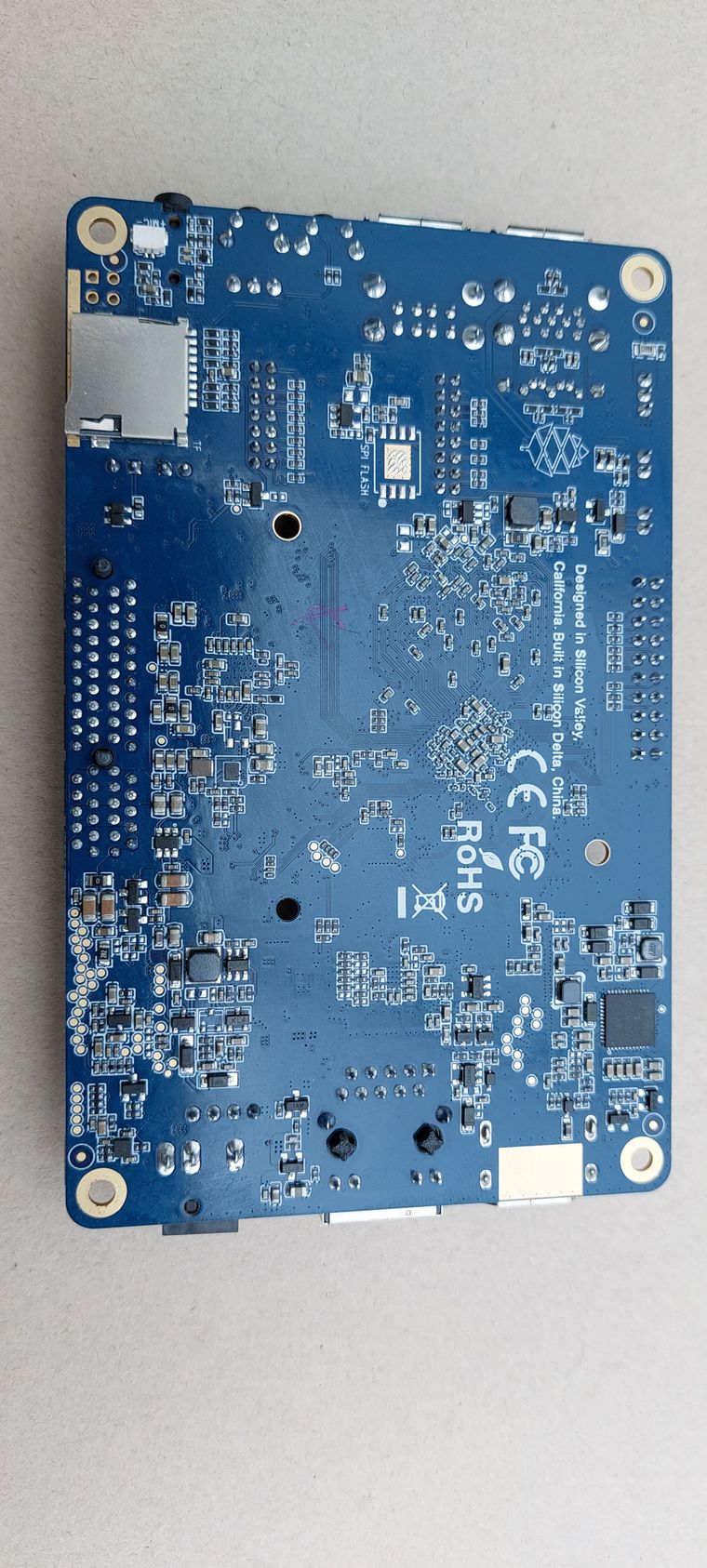Gestern hatte ich nach langer Zeit mal wieder das Bedürfnis zu schauen, was Manjaro so macht
Dieses Image habe ich ausgewählt. Manjaro-ARM-kde-plasma-quartz64-a-20220418.img.xz
Nach der Installation bemerkt, das jetzt beim Login steht, das man eine Wayland Session startet
[image: 1650567294138-20220421_205322-resized.jpg]
Man merkt dem KDE Plasma direkt an, das er wesentlich weniger Latenzen hat, als das olle X11. Ich musste dann dem Dan wieder auf die Nerven gehen, weil ich doch von dem Thema Grafik, 3D-Beschleunigung usw. NULL Ahnung habe. Er meinte dann zu mir, das Panfrost mittlerweile aktiv ist. Panfrost?
Schauen wir mal nach. https://docs.mesa3d.org/drivers/panfrost.html
The Panfrost driver stack includes an OpenGL ES implementation for Arm Mali GPUs based on the Midgard and Bifrost microarchitectures.
Im Quartz64 ist folgende GPU verbaut
Mali-G52 2EE Bifrost GPU@800MHz
Diese wird von Panfrost unterstützt.
Jetzt stand da noch OpenGLS ES, was ist das?
OpenGL for Embedded Systems (OpenGL ES or GLES) is a subset[2] of the OpenGL computer graphics rendering application programming interface (API) for rendering 2D and 3D computer graphics such as those used by video games, typically hardware-accelerated using a graphics processing unit (GPU).
Quelle: https://en.wikipedia.org/wiki/OpenGL_ES
Ich habe dann mal geschaut, wie man Panfrost testen kann. Hier bin ich gelandet.
Ich habe zwei Test gemacht, einmal mit X11 und das andere Mal mit Wayland. Von dem X11 Test habe ich ein kleines Video angefertigt.
https://www.youtube.com/watch?v=_1LLwkJ3xD0
Am Ende könnt ihr den glmark Score erkennen 112
Und hier mal das Ergebnis mit Wayland 365 Ich würde jetzt als Noob sagen, Wayland ist 3,3 mal schneller. Da ich aber eingangs schon erwähnte, das ich von dem Thema keine Ahnung habe, überlasse ich den Menschen mit Fachkenntnissen die Einschätzung.
[image: 1650567132321-2022-04-21_20-49.png]
Mein subjektiver Eindruck ist, Wayland läuft wesentlich besser. Das habe ich auch auf meinem Haupt-PC schon festgestellt. Vor allen Dingen die Latenz ist um ein vielfaches besser. Aber wir dürfen auch nicht verschweigen, bei Wayland geht vieles noch immer nicht. Zum Beispiel konnte ich das Video nur auf X11 mit SimpleScreenRecorder machen.
Leider sind wir immer noch nicht an dem Punkt, wo z.B. Youtube Videos im FF einwandfrei laufen. Von der HArdware Unterstützung brauchen wir auch nicht zu sprechen, da geht immer noch nicht so richtig viel. Die PCIe Schnittstelle habe ich noch kurz mit einer NVMe getestet.
[frank@frank-pc e5f97e94-0e45-4fa6-b8fb-373e35c708f8]$ iozone -e -I -a -s 100M -r 4k -r 16k -r 512k -r 1024k -r 16384k -i 0 -i 1 -i 2
Iozone: Performance Test of File I/O
Version $Revision: 3.489 $
Compiled for 64 bit mode.
Build: linux
Contributors:William Norcott, Don Capps, Isom Crawford, Kirby Collins
Al Slater, Scott Rhine, Mike Wisner, Ken Goss
Steve Landherr, Brad Smith, Mark Kelly, Dr. Alain CYR,
Randy Dunlap, Mark Montague, Dan Million, Gavin Brebner,
Jean-Marc Zucconi, Jeff Blomberg, Benny Halevy, Dave Boone,
Erik Habbinga, Kris Strecker, Walter Wong, Joshua Root,
Fabrice Bacchella, Zhenghua Xue, Qin Li, Darren Sawyer,
Vangel Bojaxhi, Ben England, Vikentsi Lapa,
Alexey Skidanov, Sudhir Kumar.
Run began: Thu Apr 21 21:49:06 2022
Include fsync in write timing
O_DIRECT feature enabled
Auto Mode
File size set to 102400 kB
Record Size 4 kB
Record Size 16 kB
Record Size 512 kB
Record Size 1024 kB
Record Size 16384 kB
Command line used: iozone -e -I -a -s 100M -r 4k -r 16k -r 512k -r 1024k -r 16384k -i 0 -i 1 -i 2
Output is in kBytes/sec
Time Resolution = 0.000001 seconds.
Processor cache size set to 1024 kBytes.
Processor cache line size set to 32 bytes.
File stride size set to 17 * record size.
random random bkwd record stride
kB reclen write rewrite read reread read write read rewrite read fwrite frewrite fread freread
102400 4 53221 74745 76900 77656 46983 73982
102400 16 135113 181063 182235 183108 131535 180494
102400 512 354092 361813 357888 362080 351316 361385
102400 1024 368909 373104 374076 378286 372179 372881
102400 16384 384251 378963 376150 377334 376874 377929
iozone test complete.


 Die Spannungsversorgung ist schon mal gleich. Die UART-Schnittstelle funktioniert so wie hier schon beschrieben.
Die Spannungsversorgung ist schon mal gleich. Die UART-Schnittstelle funktioniert so wie hier schon beschrieben.
 F FrankM verschob dieses Thema von Quartz64 am
F FrankM verschob dieses Thema von Quartz64 am
 F FrankM verschob dieses Thema von Quartz64 - A am
F FrankM verschob dieses Thema von Quartz64 - A am





